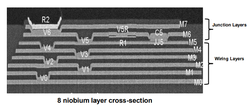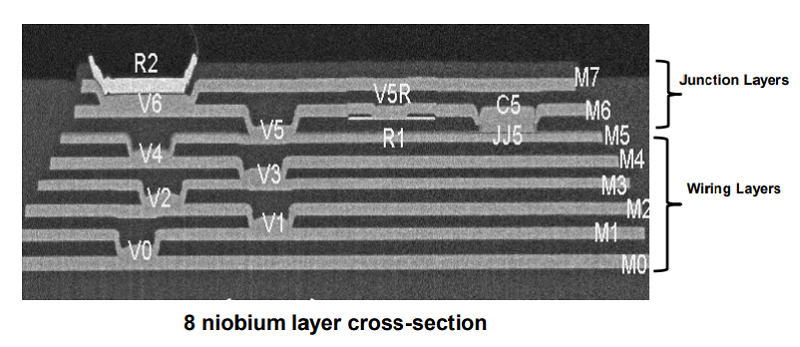
Aug. 28, 2018
By: Michael Feldman
China is investing $145 million to become a world leader in superconductor-based computing, a technology that could make semiconductor-powered supercomputers and datacenter servers obsolete.
The research project was first reported on August 26 in the South China Morning Post, which noted the effort was “quietly launched by the Chinese Academy of Sciences (CAS) in November last year with a budget estimated to be as much as one billion yuan.” According to the report, Chinese scientists have already developed integrated circuits built from some unnamed superconducting material and have tested an industrial process that would enable low-cost production. Last year, the effort produced computer chips with 10,000 superconducting junctions. The report goes on to say to that a system architecture based on the technology is nearly complete.

Superconducting circuitry is one of a handful of technologies that could maintain the forward progress of computing after Moore’s Law fizzles out in the next decade. Unlike semiconductors, superconductors exhibit almost no electrical resistance, which allows them to operate with extreme energy efficiency. According to a 2017 research paper on the technology, “a superconductor computer could outperform its semiconductor counterparts by two orders of magnitude in energy efficiency, showing 250 GFLOPS/W.” That’s five times the efficiency of a nominal 20 MW exaflop supercomputer at 50 GFLOPS/W, an ambitious metric unlikely to be attained in the first crop of exascale machines that are expected to come online between 2020 and 2023.
The exceptional energy efficiency of superconductors also makes it possible to build extremely fast logic circuits, up to 770 GHz for a particular type of technology known as RSFQ logic, which is based on Josephson junctions. Such speeds would revolutionize supercomputers, which are currently powered by conventional CPUs and GPUs running at 1 to 5 GHz. Processors based on semiconductors haven’t gotten appreciably faster in over ten years, corresponding to the time when Dennard scaling broke down.
Unfortunately, building general-purpose superconducting computers has thus far eluded computer scientists, despite the fact they have been working on the technology since the 1950s. For one thing, the materials used to support superconducting requires that it operate at near absolute zero, requiring the computer to be chilled with a cryogenic refrigeration unit. This technology is actually fairly well-developed and, although it adds some complexity and extra power to the system, it’s certainly not a show-stopper.
The larger challenge is the reliance on exotic materials based on niobium, tantalum, and other metallic compounds and using them to manufacture well-behaved superconducting logic circuits and memory cells. A nice summary of superconducting computer research that was eventually abandoned is chronicled in a 2016 IEEE Spectrum article , which traced the various efforts at Bell Telephone Laboratories, IBM, MITI in Japan, and the National Security Agency (NSA).
Interest by the NSA reflects the promise of these of systems for performing intelligence analysis and encryption/decryption at lightning speed. The more recent Chinese interest in superconducting is also being driven by intelligence and security concerns, as well as applications in weapons development. But Li Xiaowei, the executive deputy director of the State Key Laboratory of Computer Architecture, said “the main motivation to build a superconducting computer was to cut the energy demands of future high-performance computers.”
For the Chinese, the research effort also reflects a broader incentive to develop computer technologies that challenge the dominance of US chipmakers. CAS president Bai Chunli noted that superconducting computers will “help China cut corners and overtake [other countries] in integrated circuit technology.”
Nonetheless, the Chinese don’t appear to be overconfident about their chances of outrunning the US and Japan, which have a much longer history in researching and developing superconducting computers. In the US, the current effort to develop this technology is being spearheaded by the Intelligence Advanced Research Projects Activity (IARPA), a federal research agency that fulfills the same role that DARPA does for the Department of Defense.
The IARPA effort, known as Cryogenic Computing Complexity (C3), is primarily focused on developing superconducting logic and memory for high performance computing. Prime contractors include IBM, Northrop Grumman Systems Corporation, and Raytheon BBN Technologies. One of the project’s major accomplishments is the production of a niobium-based digital superconducting chip comprised of more than 70,000 Josephson junctions. The chip was manufactured by Lincoln Laboratory’s niobium foundry, which claims to be the most advanced of its kind in the world.
However, the budget for C3 and even its precise timeline have not been made public. In that respect, the Chinese have been more forthcoming. Although the details of what the Chinese project has produced is still mostly a mystery, the one-billion-yuan effort is planning to unveil a prototype computer as early as 2022. It’s conceivable that the C3 project will also deliver its prototype within the next few years, although, again, IARPA has kept those plans under wraps. The bottom line is that if either of these projects fulfills its promise early in the next decade, the era of exascale computing is going to look a lot different than what most people envisioned.
Image: Supercomputing circuitry based on Josephson junctions. Source: IARPA
